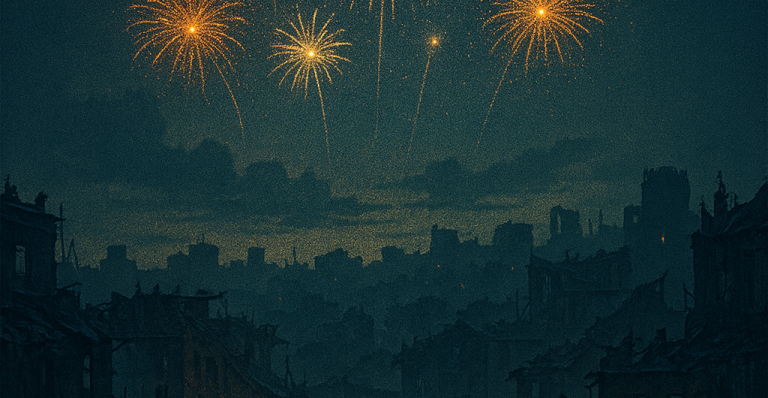Writing a novel isn’t a straight line: it’s a carnival ride. One moment you’re strapped into something that feels predictable, and the next you’re upside down, hair flying, clutching the safety bar and thinking, “Wait… this wasn’t on the map.”
Rewriting is like that. It’s not neat, it’s not tidy, and it certainly doesn’t follow the same logic as writing a first draft. In drafting, you’re building the house. In rewriting, you’re knocking down walls, moving staircases, and sometimes deciding the living room works better as a garage. It’s messy, occasionally maddening, and absolutely necessary.
And sometimes, if you’re willing to embrace the chaos, it leads to magic.
Scenes That Live, Die, and Rise Again
Every writer has “darlings” that don’t survive the cut. A chapter you loved when you wrote it might not work in the bigger picture. Maybe it’s too slow. Maybe it overlaps with another scene. Maybe it just doesn’t carry its weight.
The funny thing is: those “dead” chapters don’t always stay dead. Sometimes they rise again, zombie-like, to demand another shot.
I’ve had whole sections of Ephemeris that I thought were gone for good only to find them tapping on the window months later, asking to come back in. And if you’re patient (and maybe just a little reckless), you realize they weren’t wrong. They were just waiting for the right place to land.
The Mirror Problem
One of the challenges in editing is redundancy. You don’t always see it when you’re drafting, but later, you realize you’ve written two different versions of the same idea. Two characters having similar conversations. Two settings that feel like twins.
That’s where a sharp-eyed beta reader can save the day. They’ll point to something you adore and say, “This is fine… but you’ve already done it better somewhere else.”
It stings a little. You want to argue. But deep down, you know they’re right. Rewriting means recognizing the story doesn’t need echoes; it needs clarity. When two chapters are fighting for the same space, one of them has to go.
The Swap-Out Trick
Here’s where the chaos really gets fun: sometimes the solution isn’t to delete but to swap.
A cut scene, once marked for “bonus content,” can find new life if you plug it into the story where another chapter sat until just moments ago. Suddenly, a piece that once felt extraneous becomes essential. It connects dots you didn’t even realize needed connecting.
It’s like rearranging a band’s setlist: you move a ballad up, cut another one, and suddenly the concert just flows. The energy spikes in the right places. The emotional beats hit harder. The whole thing works.
That’s one of the wildest parts of rewriting… you can discover that your story needed the exact scene you thought you’d buried months ago.
Characters Who Refuse to Stay Quiet
Sometimes it’s not just a chapter that won’t die; it’s a character.
You invent someone for a side moment or an experiment, and suddenly they’re banging on the door demanding more stage time. You cut them. You promise yourself they’re gone. You make peace with it. And then, months later, you find yourself offering them up as bonus content. You promise readers of your next newsletter that they’ll get a complete chapter from the cutting room floor in the next edition.
And then while you’re in the middle of working on that very newsletter, that voice in your head whispers the last thing you’re prepared to hear… That chapter would actually solve this problem. Rearrange a few things in the middle, slide that other character in there, and then boom. It all goes together.
That’s the thing about characters: once they exist, they don’t like to be forgotten. They’re stubborn. And sometimes, if you listen, they’re absolutely right: they are more than just bonus material.
The Reader Never Knows the Roadmap
Here’s the best part about rewriting chaos: the reader never sees the mess.
They won’t know about the deleted chapters, the trial-and-error swaps, or the characters who almost didn’t exist. They won’t know about the two weeks you spent agonizing over whether to merge two chapters or split them apart.
What they will see is a story that feels purposeful, inevitable, whole. They’ll think you planned it that way from the start. And you’ll just smile, knowing the truth: it was a wild ride of detours and backtracks and wrong turns, but somehow, you got there.
Why I Call It Helter Skelter
I titled this post “Helter Skelter” because rewriting feels like that Beatles track: loud, raw, unpredictable, and impossible to control. It speeds up, slows down, crashes into itself, and leaves you breathless.
And yet, just like that song, the chaos has its own kind of order. Every messy decision: every cut, every swap, every resurrection… shapes the story into something tighter, stronger, and more alive. When I get to the bottom I go back to the top of the slide, where I stop and I turn and I go for a ride, til I get to the bottom and I see [that long-lost character] again.
Rewriting is proof that art is never really finished on the first try. It’s sculpted in layers, through risk and revision and the willingness to tear down what you thought was unshakable… again.
Lessons for Fellow Writers
If you’re in the trenches of revision, here are three little reminders from my own helter-skelter journey:
- Don’t be afraid to cut what you love. If it doesn’t serve the story, it can go. And sometimes, cutting it is what makes it strong enough to come back stronger later.
- Listen to outside voices. Beta readers aren’t always right, but when multiple people see the same issue, it’s worth paying attention.
- Stay open to surprise. A scene or character you thought was “bonus material” might be the missing puzzle piece that ties everything together.
Embracing the Beautiful Mess
At the end of the day, rewriting is less about perfection and more about discovery. It’s messy, it’s frustrating, it’s exhilarating… and if you’re doing it right, it’ll take you places you didn’t expect.
That’s the beauty of the process. The story evolves. The writer evolves. And the book that emerges is better for all the helter-skelter chaos it endured along the way.
So if you’re feeling lost in the madness of your own draft, hang on. The ride isn’t supposed to be smooth, but it’s worth it.







